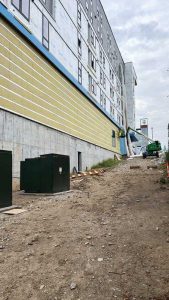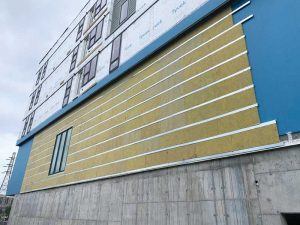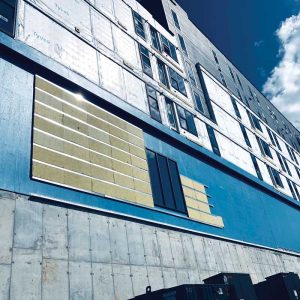
Growing customer demand
Public interest in environmentally conscious business practices has been higher than ever. With the construction industry generating an estimated 39 percent of the world’s carbon emissions, customers are seeking solutions to address the challenges in building design, with a strong emphasis on enhancing energy efficiency. In a recent global survey across several sectors, executives in construction and engineering have shown the most progress in prioritizing sustainability in design, with 47 percent considering it a top priority.1
Therefore, the surge in customer demand for sustainable practices such as c.i. may be rooted in a growing awareness of environmental concerns and energy efficiency in construction, and in effect, a heightened demand for sustainable construction practices. In response, the construction industry is witnessing a transformative shift, and c.i. practices—which involve the installation of insulation materials forming an uninterrupted barrier across the building envelope—provide a compelling solution. Adopting c.i. practices work on several levels:
- It prevents heat loss or gain through the structure, leading to improved thermal performance and reduced energy consumption.
- It aligns with the regulatory and certification requirements that are becoming more stringent.
- It ensures compliance with energy efficiency and environmental impact standards set by governments and industry organizations.

Beyond its energy efficiency benefits, c.i. practices also offer:
- Versatility in building design, allowing for greater aesthetic flexibility while maintaining performance.
- Empowerment for architects and designers to meet customer expectations for comfort and sustainability.
The growing customer demand for c.i. practices is pushing builders and contractors to explore new construction frontiers. Just like how the 2×4 has been phased out of exterior wall assembly construction in many parts of the U.S., there will come a time when insulation will no longer be restricted to just the cavity. It is not a trend, but a structured shift toward more environmentally responsible building solutions.

Meeting new code requirements
As customer demands change, building codes have also undergone a significant shift. The 2021 building codes place a greater focus on c.i. for many U.S. climate zones, setting higher standards for energy performance and thermal resistance. This makes c.i. an essential component of virtually all new construction projects within these climate regions.
In hot and arid climate conditions, c.i. can help keep buildings cool while reducing the energy needed for air conditioning. In colder regions, c.i. contributes to better temperature control and reduced heating costs. Builders must adapt to these climate variations to ensure their projects meet the location’s performance and compliance standards. This underscores the need to find experienced partners who understand the use and execution of c.i.-related projects. The more knowledge and expertise available, the easier it will be for projects to pass the necessary inspections and regulations, regardless of the climate zone.




